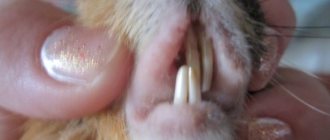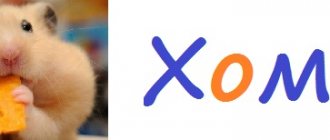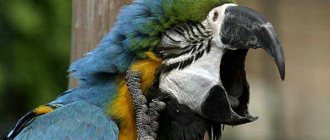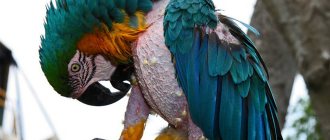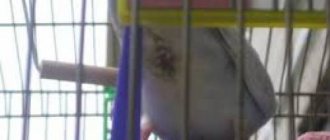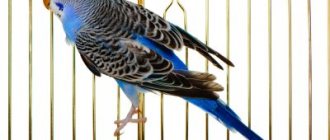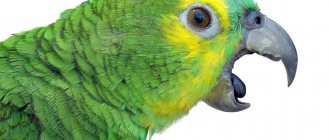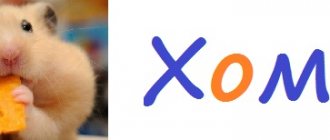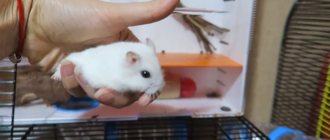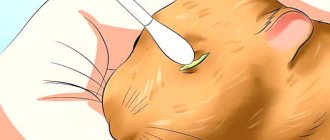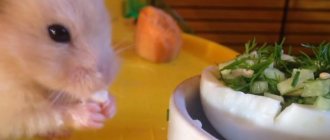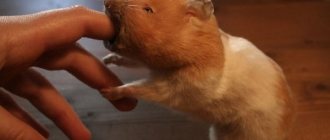Most poultry keepers are faced with the problem of feathers falling out in budgerigars and other species of parrots. This is a warning sign. A bald parrot can suffer from various diseases and experience severe stress. Therefore, it is necessary to understand why a parrot’s feathers fall out, what it signals, and how to correct the situation.
Why does a parrot lose feathers?
There are many reasons that lead to a parrot going bald. Some of them are related to normal avian physiology and do not require owner intervention. However, most cases of sudden shedding of feathers indicate a disease in the bird. Sometimes it is possible to prevent further deterioration of the condition by changing the conditions in which the pet is kept and fed. Some illnesses require a visit to the veterinarian.
The main reasons why a parrot may go bald:
- natural shedding;
- avitaminosis;
- French molt;
- shock molt;
- parasitic diseases and infections;
- self-plucking;
- hormonal problems;
- microclimate disturbance.
The owner must be able to distinguish between conditions caused by different factors in order to know when it is not necessary to interfere with natural processes, when you can solve the problem on your own, and when you should contact a specialist.
Natural shedding
If your parrot's feathers have fallen out, this may mean that natural seasonal molting has begun. It goes away for the first time when the chicks reach the age of 3-5 months. At this time, juvenile down changes into adult feathers. A complete change of plumage lasts about 2 months; At this time, parrots can become aggressive and irritable, but after the process is completed, their behavior returns to normal. Adults usually molt 2 times a year - in spring and autumn; the process usually takes about 30 days. At the same time, the feathers fall out evenly, and new feathers immediately grow in their place; There are no areas of baldness.
Avitaminosis
One of the reasons why budgies go bald is due to a deficiency of vitamins and minerals. If a parrot's head goes bald, this indicates a lack of vitamins A and B in its body. In this case, the bird mainly loses feathers on its head, around the eyes and beak. With a lack of elements such as calcium, phosphorus and silicon in the diet, the parrot's feather cover becomes loose, dull and unviable, falls out easily and grows back slowly. Therefore, it is important to feed your pets a varied diet, including fresh vegetables, fruits and herbs, as well as vitamin and mineral supplements.
French molt
French molt is a serious disease that cannot be cured. It is characterized by the fact that the parrot loses feathers from its tail and wings (flight feathers, tail feathers). The bird loses the ability to fly and moves only on the floor. This disease manifests itself in chicks at the age of 3-4 months. Lost feathers may grow back, but then fall out again. The causes of French molt are not entirely clear. The disease is believed to be hereditary; in addition, it can develop with an excess of vitamin A and a deficiency of protein in the diet, as well as as a result of infectious diseases suffered at an early age.
Shock shedding
The cause of shock molting is severe stress. Budgerigars are quite sensitive birds, and many events can cause them shock. Sharp and loud noise, catching with hands and rough handling, placing another bird in the cage, changing the owner can lead to the pet starting to go bald. During shock molting, the parrot's feathers fall out in clumps, leaving large bald spots. A bird can lose both small covert feathers and large ones - tail feathers and flight feathers. After eliminating the stress factor, baldness stops and the feathers grow back.
Parasites and infections
One of the most dangerous reasons why a parrot loses feathers is infection with parasites (mites, feather eaters) or pathogenic fungi. In this case, the bird experiences severe discomfort, loses appetite, and scratches its skin. As a result, signs of inflammation, peeling, wounds and ulcers appear on the skin. Feathers become disheveled, unkempt, and brittle. When infested with mites, the back and neck most often become bald, and when there is an infestation of downy feather eaters, you may notice that the parrot has no feathers under its wings or on its belly. If left untreated, the bird may lose its plumage completely.
Self-plucking
Parrots tend to pluck their own feathers due to stress and strong emotional experiences. Self-plucking can result from:
- lack of attention from the owner;
- lack of toys, boredom;
- severe fear or constant stress;
- loud noises, sharp sounds;
- change of owner or place of residence;
- the arrival of a new family member or pet.
By plucking feathers, the parrot is trying to calm and entertain itself or attract the attention of a person. To cope with this problem, you need to create a calm environment around the bird’s cage and give the pet as much attention as possible.
Hormonal imbalances
If the owner notices that his budgerigar is without feathers, this may indicate hormonal imbalances in the bird. Most often they are observed in mature individuals, which are kept alone. Excess protein and sprouted grains in the diet provokes increased production of sex hormones. If a bird fed this diet is not allowed to breed, it will begin to lose its feathers. Baldness is also observed when the pituitary gland and thyroid gland are malfunctioning. At the same time, the growth of feathers slows down, and bald spots appear on the body. After appropriate treatment with hormonal drugs, the plumage is restored.
Microclimate
Often the cause of baldness is poor maintenance and improper microclimate in the room where the bird lives. Feather loss can be caused by:
- crowding, as a result of which the parrot rubs against the bars of the cage;
- dry air and too high room temperature;
- lack of water procedures;
- irregular cleaning, dirt in the cage;
- poisoning by toxic substances - tobacco smoke, aerosols;
- insufficient or excessive lighting, incorrect selection of lamps;
- allergic reactions to filler or food.
After eliminating unfavorable factors, the plumage is usually restored.
Parasitic, fungal, infectious diseases
Very often, budgies lose their feathers due to infection with external parasites. If a parrot's body is parasitized by mites, the bird experiences severe itching and anxiety. In addition to fallen feathers, scratches, sores, and wounds appear on the body. The skin is peeling. With severe infection, acute inflammation can develop in various structures of the dermis. Infection with down feather eaters and scabies mites leads to deterioration of the plumage and provokes severe feather loss.
Sign of tick infestation
You can understand that a parrot is infected with a tick after a visual inspection of the pet or by performing a simple test. Line the bottom of the cage with white paper or a light-colored cloth. If you see small dark dots, be sure that your parrot is infected with a mite.
Treatment and prevention
If your budgerigar's feathers are falling out, you need to carefully examine it to determine the cause of this phenomenon. If the feathers fall out evenly and there are no bald spots on the body, then it is time for seasonal molting, and human intervention is not required. If the bird has become lethargic, has lost its appetite, and the feathers fall out in tufts, leaving bald patches, you should consult a veterinarian to determine the cause of the baldness.
Treatment for your pet depends on the diagnosis. Sometimes it is enough to normalize the living conditions and diet, pay more attention to the pet, or place a partner of the same species with it. In other cases, treatment with hormonal, antimicrobial, antiparasitic and other medications may be required.
To prevent loss of plumage, you must comply with all requirements for keeping and feeding the bird and properly care for it. The cage should be spacious so that the parrot can move freely around it and not touch the walls with its wings and tail. It is located in a room with good ventilation, away from heating devices and noise sources. The diet should be varied and include vitamin and mineral supplements. The owner should spend as much time as possible interacting and playing with the bird; To keep her from getting bored, toys are placed in the cage. The parrot's home is regularly washed and disinfected to prevent the proliferation of fungi and parasites.
Treating your favorite birds
What to do when a parrot loses its plumage a lot and turns into a pitiful naked carcass? Before deciding to have pet birds, the future owner needs to study the rules for keeping parrots and ensure they have a full-fledged existence. And at the first signs of illness, immediately contact a veterinarian.
Only an experienced doctor can prescribe adequate and competent treatment for parrots. The advice of experts, not the arrogance of the owner, helps to put the bird in order!
Rules for keeping parrots
The subtleties of caring for friendly and funny winged pets depend on the breed of the parrot, the size of the bird and the characteristics of its habitat in natural conditions. But there are a number of general principles, following which the owner will ensure a comfortable and healthy existence for the pet. Before buying a parrot, prepare for its arrival:
- Spacious cage. For active birds, the dimensions of the home should start from 40x25x30 cm (this is the minimum). The larger the bird, the larger the house will be - the bird needs to freely flutter around the house without touching the bars.
- Feeder, bath and drinking bowl. It is advisable to purchase a couple of containers for food - for soft and grain foods. The best material is porcelain or plastic. You will need a bath in hot weather - after each bath, change the water and clean the container.
- Chalk for birds, various sticks, sand. Choose different perches, preferably from hard wood species (birch, oak, maple). The best diameter is 1.5-2 cm. Chalk supplies the bird with calcium and helps to sharpen the beak. And the sand is poured into a tray - it is necessary for good digestion (sand can be poured into a separate feeder).
- Toys (noisy, ringing, be sure to buy a mirror). A mirror will be needed if the pet plans to live separately.
- The menu should include: grain mixture, branches of deciduous trees (linden, aspen, hazel, rowan). Vegetables, curd products, fruits, and chicken eggs. Herbs (parsley, dill, sorrel, lettuce, dandelion stems). In winter, pamper your pet with sprouted grain (give the sprouts in portions and immediately remove the leftovers).
Let's go get the parrot. When purchasing a future pet, carefully inspect the bird. A healthy bird, cheerful and curious, with clean plumage without a hint of a bald spot. The beak is smooth without defects. The eyes are not puffy, clear. A bird in good health does not cough or sneeze. It is better to purchase young chicks - they will quickly get used to new living conditions.
We place the cage. Install the pet's home away from drafts and heating devices, preferably at the level of the owner's head.
It is forbidden! Place the cage in the kitchen, install it on household appliances (computer, oven, TV, microwave, refrigerator).
The parrot's home should be well illuminated by the sun's rays, but do not overuse the light - cover part of the house with a cloth so that the parrot can hide. For birds, the optimal air temperature is +20-25⁰ C. When choosing a cage size, be guided by the breed of bird:
| Parrot species | Dwelling size | ||
| Height (cm) | Bottom (cm) | Taphole diameter (cm) | |
| Amadin, Zebra, Kakarik, Wavy | 30 | 20x20 | 7 |
| Lovebirds | 35 | 22x22 | 7 |
| Corella, Rosella | 40 | 30x35 | 9 |
| Ozherelovy, ringed breeds | 40 | 35x40 | 9 |
| Alexandrian, Amazon, Jaco, small Cockatoos | 65-95 | 45x45 | 12 |
| Large cockatoos, macaws | 125 | 95x95 | 22 |
Care. Provide your talkative pet with constant, clean, unboiled water. Change the water daily. Wash water bowls and feeders well every day, clean the cage daily. And do a general tidy up every month, and after global cleaning, treat the toys and home with chamomile infusion.
Twice a year the cage and accessories are treated with Neostomosan. After disinfection, surfaces are rinsed with chamomile decoction and thoroughly ventilated. During cleaning, the birds are placed in a separate room. Every day, let the birds fly freely around the room (make sure the windows are closed). If a parrot ends up outside in winter, it is doomed to die.
Prevention
It is easier to predict any illness than to treat it. The owner, in addition to regular care and care, should constantly inspect and monitor the playful bird. A sudden change in behavior, cough, apathy, heavy breathing, loss of appetite become a reason for an immediate visit to the doctor. Each owner should also have a first aid kit, consisting of:
- Potassium permanganate.
- Baking soda.
- Boric acid.
- Pharmaceutical chamomile.
- Activated carbon.
- Spare carrier cage.
- Hydrogen peroxide (3%).
- Pipettes and containers for solutions.
- A narrow adhesive plaster, cotton wool and a bandage.
- Sterilized vegetable oil.
- Sodium citrate (Stroud's solution).
- Anti-burn agents (ointments or aerosols).
- Curved nail scissors or nippers (for processing the beak).
- Solid wood chips according to the size of the legs and wings (in case of a fracture as a temporary measure).
Remember! Diagnosis of parrot diseases is complex and is carried out only by experienced specialists. Self-treatment can worsen the condition of your beloved pet and lead to its death. Therefore, in case of any manifestations of disease, put the parrot in a carrier and rush to the veterinarian.
Only a doctor will explain what to give the bird, how to treat it, what medications to use.
Before you go to see your doctor, write down the following information on a piece of paper. The doctor will definitely ask about this - this information helps to more accurately establish the cause of the bird’s illness:
- Pet's age.
- Where is he kept (aviary, cage).
- What illnesses has your pet already suffered?
- When did you notice the first signs of the disease?
- When and under what conditions was the parrot purchased?
- Did the bird participate in exhibitions? If yes, when and where.
- What is the parrot's diet (name of food, supplements, vitamins).
Environmental reasons
When a parrot goes bald for no apparent reason, the answer to the question “why?” often simple. The bird suffers from unfavorable living conditions. In most cases, this is the fault of the owner, who was unable to provide the bird with a normal home.
A parrot moults when its cage is too small. Frequent rubbing against the bars causes irritation on the skin, and it leads to loss of cover.
The skin also suffers from allergic reactions that occur for various reasons - from a new product in the diet to banal dustiness of the room. The pet is kept clean and warm, and the diet is adjusted to the recommendations of veterinarians.
A bird loses its feathers for more “minor” reasons. These include room lighting and air quality.
The lighting above the bird's house is carefully adjusted. The lamps chosen are not bright, otherwise the light will irritate the pet’s eyes, but not dim either – these cause the pet’s eyes to overstrain, which causes stress. Lamps whose task is to imitate daylight are not suitable for birds.
In the room in which the parrot lives, the air humidity is monitored. Low humidity leads to dry skin. Air quality also refers to the presence of foreign gases and vapors. In the room in which the bird lives, do not smoke or spray aerosols, do not use perfume, and do not burn anything caustic.
Stress or fear
This may also be the reason why parrots go bald. Such birds are quite shy and the slightest stressful situations can seriously affect their body. Loss of plumage is considered one of the manifestations of stress. This happens when there is a change of owner, sudden noises, or constant quarrels in the house. At the same time, the parrot becomes bald under the tail, in the tail part or in the small covert feathers; usually the feathers are lost in tufts, but when the bird calms down, the plumage will return to normal. Shock shedding may also be related to why your parrot is losing feathers on its head, neck, or other parts of its body.
Hormones
Hormones affect not only our lives, but also the life of a parrot no less.
As you know, there are a lot of hormones known, and they are produced by endocrine glands. We will be more interested in the pituitary gland and the thyroid gland (thyroid gland).
When the level of hormones drops towards deficiency or excess, this immediately affects the quality and growth of feathers.
If the problem is in the pituitary gland, then it is unlikely that anything can be done, since there is simply no treatment, but in the case of the thyroid gland, everything can be solved with simple treatment.
But don’t worry, problems with pituitary hormones are quite rare in practice, much less common than, for example, the disease that we will consider below.
Baldness of parrots
Regardless of the weather, time of year, gender and age, it can happen that a parrot becomes bald on its head.
There are several reasons for this phenomenon. During normal seasonal molting, which lasts two to three months, the parrot gradually loses its plumage. Most often it occurs after nesting. The largest feathers fall out from the tail and wings first, then from the back of the belly and neck. Molting ends with the loss of feathers on the head. This is a natural process, not a painful condition of the bird. In this case, the owner of the wavy should not worry; the feathers will grow back and become even more beautiful and brighter.
In exceptional cases, molting may be delayed, which will affect the health of the bird. The parrot's appetite will deteriorate and it will be lethargic. He will stop playing and chirping, and his body temperature may even rise.
The first aid for him will be the correct air temperature in the cage. Balanced diet. Vegetables (cabbage, carrots, beets and bell peppers) should be mandatory foods. Fresh lettuce, parsley and sprouted grains. Boiled chicken protein and low-fat cottage cheese.
Particular attention should be paid to vitamins and minerals, this applies to birds with very bright, variegated colors. Without receiving such components during molting, the new plumage will be duller.
You should not breed songbirds during this period; the male will still not fertilize the female. The pair will only weaken and the shedding will worsen. A month before it is not recommended to mate birds; after breeding the offspring, the “mother” may refuse to feed the chicks.
It is important to know that shedding occurs only once a year. If it happens more often, you should consult a veterinary clinic.
Diet
Feathers can also fall out if there is a lack of vitamins and minerals in the parrot's body.
Scientifically speaking, this is called vitamin deficiency. Usually, it is accompanied not only by the loss of feathers, but also by a general deterioration in the bird’s well-being.
The best solution to this problem would be to consult with an ornithologist who will help you create a competent diet for your parrot, after which your pet will quickly recover.
As a last resort, you can read special articles that describe in detail what, how and when to feed the bird.
For the laziest, we note that you should not feed your parrot only grain.
He gets the most necessary substances for a normal life from fruits, herbs and vegetables.
In addition, there are a huge number of special supplements that can be purchased at veterinary pharmacies.
Tick infestation
This is a very dangerous disease for birds. And if it is for this reason that the parrot has a bald spot on its head, you need to sound the alarm.
If a bird is infected with a mite, the symptoms will be visible. The winged pet becomes restless and confused. In order to somehow soothe the itching, the parrot will begin to peck at various parts of its body.
The singer will have difficulty sleeping and eating. After a couple of days, the parrot will weaken and be lethargic and not playful. Talkers stop talking and tweeting altogether. What you need to do right away is to pay special attention to its plumage. Feathers affected by the feather mite will change for the worse. They will lose their diversity and fade.
The bird will become unkempt and disheveled. The first bald spots will begin to appear under the wings. In areas of bald spots, the skin peels and becomes crusty. Action must be taken immediately. In the initial stages of beetle infestation, treatment will proceed quickly.
If the disease is not stopped, the mite will continue to tunnel further and further under the parrot's skin. Then the abdomen and head become bald. Parasites are so microscopic that it is almost impossible to see them with the naked eye. If you use a magnifying device, they will definitely appear.
The parasite itself is an oblong “something” that attaches directly to the feather and parasitizes us. This is how it moves over the course of several months, first along the plumage and then along the skin of the bird.
What to do if your parrot's head is going bald. All veterinarians will unanimously say that the bird needs to be treated with an insecticide, a drug that is poorly tolerated by birds. In exceptional cases, there were even toxic poisonings.
The most common anti-period medication is Frontline. It is more familiar as a means to combat fleas and ticks in four-legged animals (cats and dogs)
Experts recommend bathing the parrot in a warm decoction of chamomile flowers, but this must be done carefully and carefully. Gradually immerse the bird in water up to its head, no deeper. Due to constant itching, the singer is depressed, so during hygiene procedures you need to treat the wavy with all affection and love.
For treatment and prevention, it is worth using another method. Buy dried chamomile flowers and wormwood at the pharmacy. Grind to flour and sprinkle the feathered family member with this “powder”.
Source
Shedding due to shock
When a parrot sheds unevenly, mostly in the area of feathers and wings, it is a shock molt. It is equated to a stressful situation. Parrots are naturally shy. They are frightened by loud sounds, injuries, cruelty from humans, and the presence of other pets in the house (mostly cats and dogs that behave aggressively towards birds).
This kind of shedding can really be stopped. To do this, you will need to calm the bird - eliminate the source of anxiety, devote more time to communication and playing together.
First time
The first moult in the life of a budgerigar is called juvenile. This process is often compared to a person’s replacement of baby teeth with molars, since it is one of the signs of growing up. Juvenile molting begins at 4–5 months, occurs with some interruptions and ends only at one year. At this time, the winged pet does not yet have experience of independent flights, and changing the plumage leads to additional difficulties. The bird may inadvertently fall or crash into a piece of furniture. Therefore, to avoid injury, it is better to temporarily restrict the parrot from flying.
If the first shedding has not begun even in the fifth month of your pet’s life, you need to contact a veterinarian. This could be a symptom of hormonal problems or a dangerous disease. Taking independent measures is highly discouraged. Your pet may be in danger.
Basic recovery principles
So, the parrot underwent treatment and got rid of the reason why his body was going bald. After this, you need to help him regain his strength.
- You need to diversify your diet.
- The parrot's place of residence (aviary or cage) is well cleaned.
- The parrot should be left alone if it is not in the mood for games. Persistence puts the bird under stress.
- If feathers fall out again, immediately contact a specialist.
Shedding is natural
When a bird goes bald entirely, without the formation of separate hairless areas, this is a natural molt in a parrot. In their natural habitat, shedding occurs once every two years, during the rainy season - usually spring or autumn. This process is not stopped. Molting is necessary to replace “old and worn out” covers with new ones that can protect the bird from external influences.
It doesn’t look scary, it often doesn’t frighten - the feathers come off in an even layer, without bald spots, and are promptly replaced by new, shiny, even ones.
